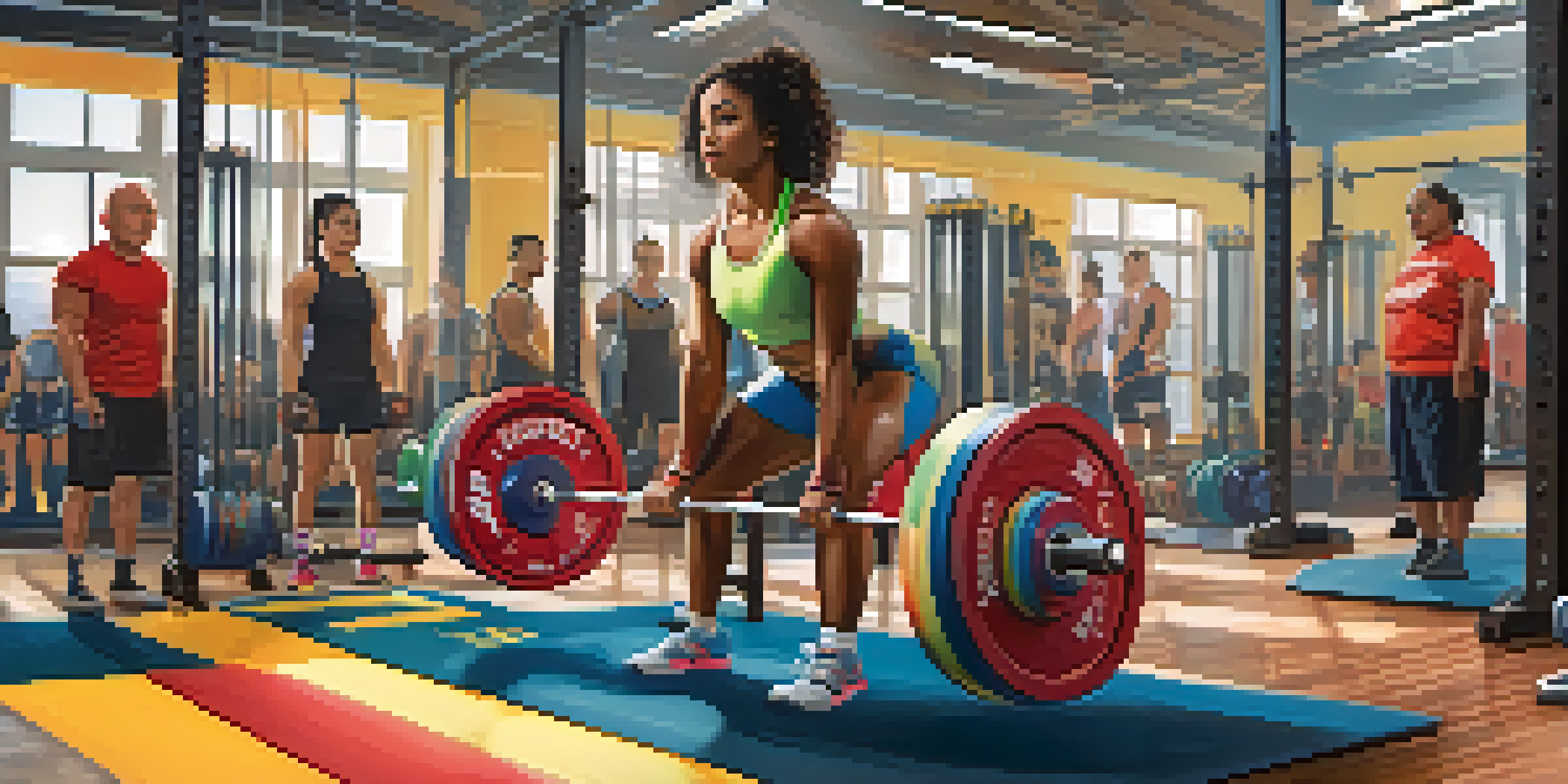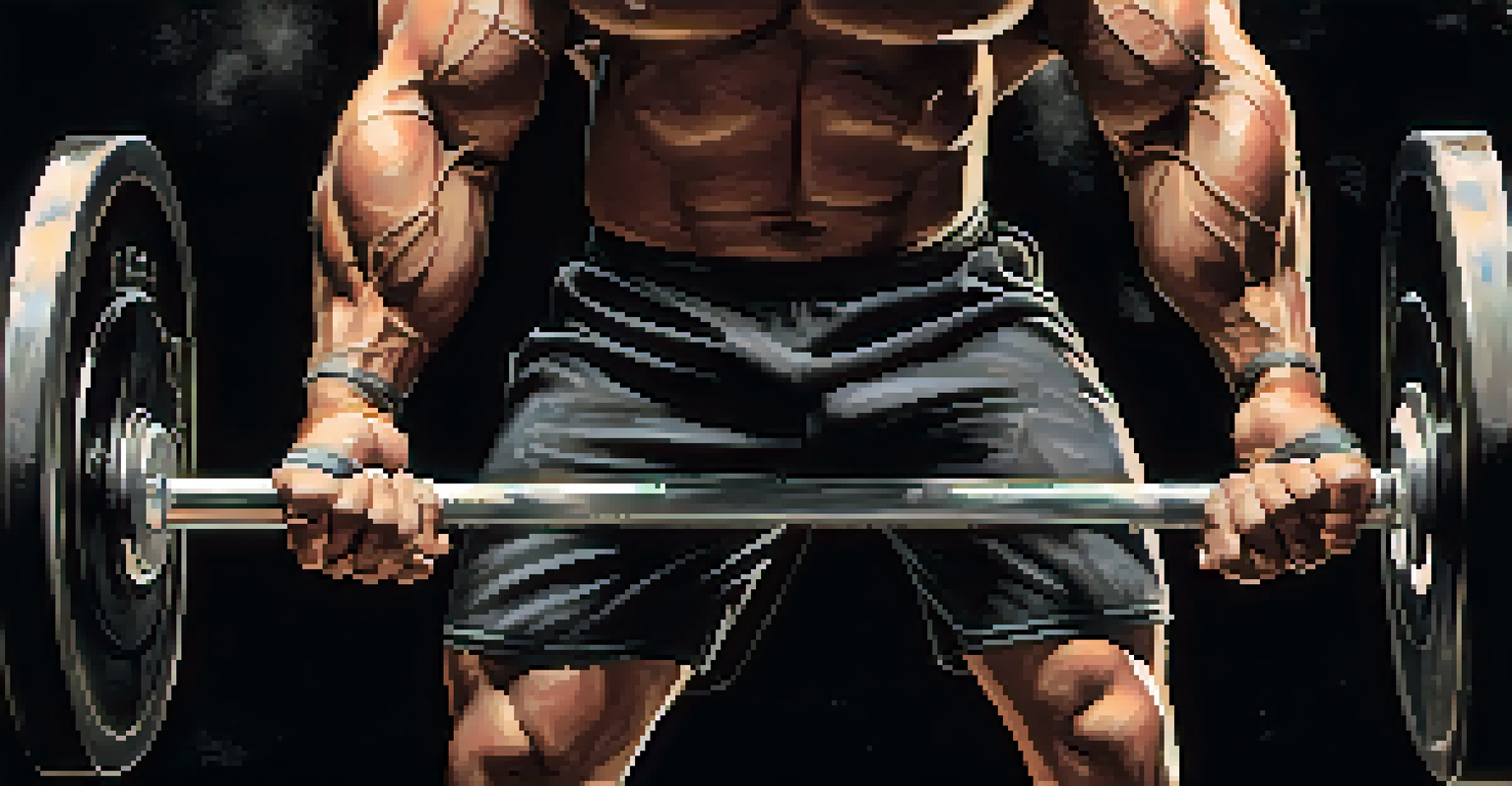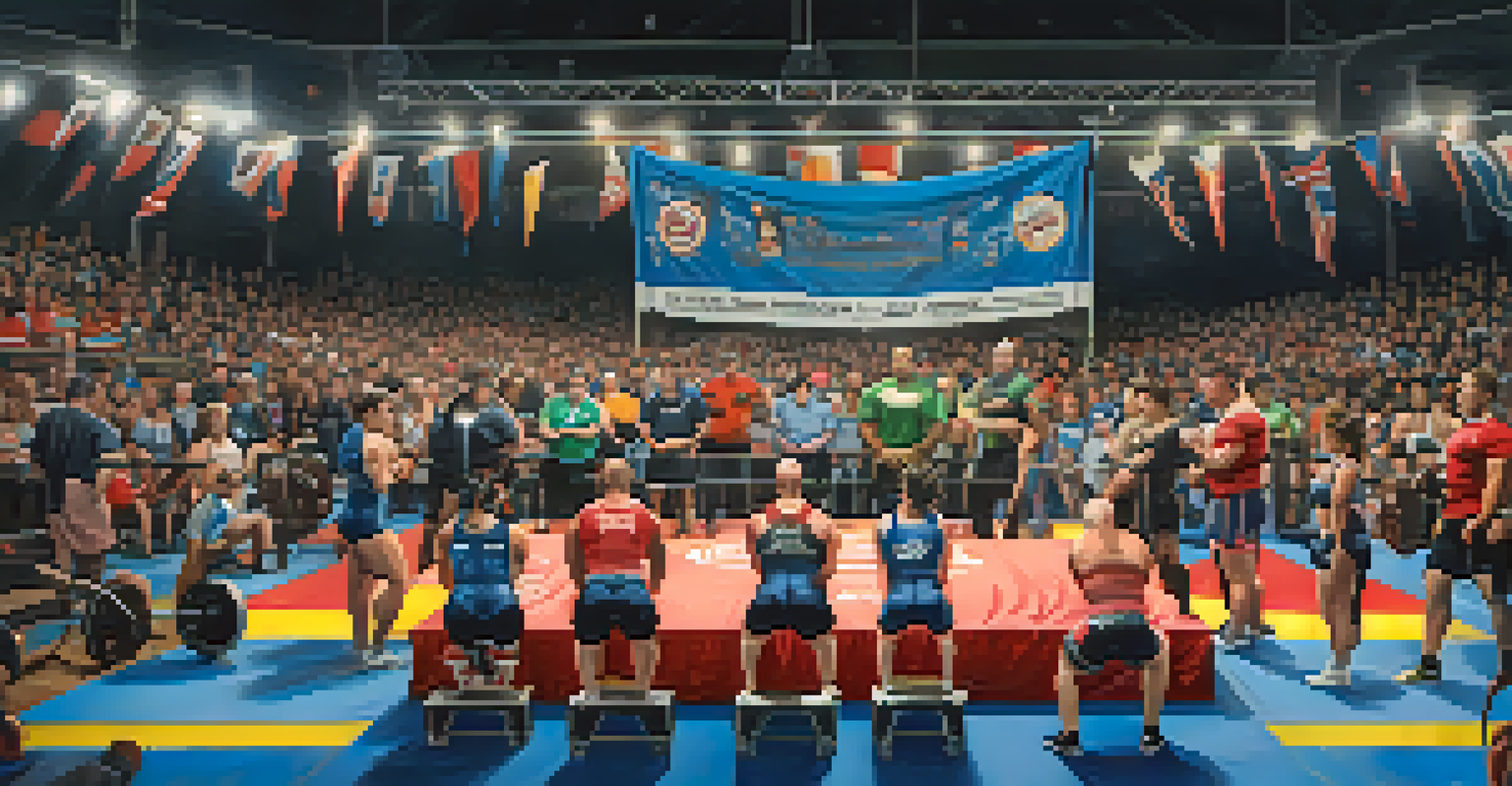Powerlifting in South Korea: Modern Trends and Practices

The Rise of Powerlifting in South Korea
Over the past decade, powerlifting has gained significant traction in South Korea. More gyms are incorporating powerlifting programs, making it accessible to a broader audience. This surge in popularity can be attributed to a growing fitness culture that emphasizes strength training and competitive sports.
Strength does not come from physical capacity. It comes from an indomitable will.
Social media plays a pivotal role in this rise, as athletes share their journeys and successes online. Platforms like Instagram and YouTube showcase impressive lifts and training routines, inspiring many to join the movement. As a result, powerlifting is no longer just a niche sport but a mainstream fitness trend.
Moreover, national competitions are becoming more frequent, fostering a sense of community among lifters. Local meets are well-attended, and the excitement surrounding these events encourages new participants to step up and challenge themselves.
Key Demographics in Powerlifting Participation
Interestingly, powerlifting in South Korea attracts a diverse demographic. While traditionally male-dominated, an increasing number of women are stepping onto the platform, breaking stereotypes and setting records. This shift is empowering and showcases the growing acceptance of female athletes in strength sports.

Young adults, particularly those in their twenties and thirties, are leading the charge in participation. Many are drawn to the sport as a way to build strength and improve overall fitness. This demographic is also more likely to seek out community and support, which powerlifting provides through clubs and online forums.
Powerlifting Gains Popularity
Powerlifting has become a mainstream fitness trend in South Korea, driven by a growing fitness culture and social media influence.
In addition, older athletes are beginning to enter the scene, demonstrating that powerlifting is not just for the young. This broad appeal highlights the sport's adaptability and the universal benefits of strength training, contributing to its growing popularity.
Training Techniques and Styles Among Lifters
Powerlifting training in South Korea often combines traditional techniques with modern practices. Lifters focus primarily on the three main lifts: squat, bench press, and deadlift, but many also incorporate accessory exercises to enhance overall performance. This comprehensive approach helps prevent injuries and improves lifting efficiency.
The difference between a successful person and others is not a lack of strength, not a lack of knowledge, but rather a lack in will.
Coaching styles vary widely, with some athletes preferring a more structured program while others thrive on flexibility and intuition. Many lifters seek personalized training plans to address their unique strengths and weaknesses. The emphasis on individualized coaching has become a hallmark of successful lifters in the region.
Additionally, the use of technology is becoming increasingly common. Fitness apps and wearable devices help track progress, making it easier for lifters to analyze their performance and make data-driven adjustments to their training.
The Role of Competitions in Powerlifting Culture
Competitions are at the heart of powerlifting culture in South Korea, serving as a platform for athletes to showcase their hard work and dedication. Events range from local meets to national championships, drawing participants and spectators alike. The thrill of competition fosters camaraderie and a sense of belonging among lifters.
For many, competing is a significant milestone that motivates them to push their limits. The anticipation of stepping onto the platform fuels their training sessions, encouraging consistency and discipline. This competitive spirit often leads to personal bests and new friendships forged through shared experiences.
Diverse Participation in the Sport
The sport attracts a wide range of participants, including more women and older athletes, highlighting its broad appeal and community support.
Moreover, South Korean lifters have begun to gain recognition on the international stage. As they compete in global events, they bring attention to the country's growing strength sports scene, further inspiring local athletes to pursue their dreams.
The Influence of Social Media on Powerlifting
Social media is revolutionizing how powerlifting is perceived and practiced in South Korea. Athletes are using platforms like Instagram and TikTok to share their training journeys, tips, and progress updates. This visibility not only builds personal brands but also contributes to a sense of community within the sport.
The rise of fitness influencers and content creators has sparked interest in powerlifting among a broader audience. Engaging content, from tutorials to motivational posts, encourages newcomers to explore the sport. The ability to connect with experienced lifters through social media creates valuable networking opportunities.
Additionally, online challenges and virtual competitions have become popular, further integrating social media into the powerlifting experience. This trend allows lifters to participate in competitions even from the comfort of their homes, making the sport more accessible to everyone.
Nutrition and Recovery Practices Among Lifters
Nutrition plays a crucial role in the performance of powerlifters, and South Korean athletes are becoming more conscious of their dietary choices. Many are adopting balanced diets that prioritize protein intake to support muscle growth and recovery. Meal prepping has also become a common practice, ensuring lifters have access to nutritious meals throughout the week.
In addition to nutrition, recovery strategies are gaining importance within the community. Lifters are increasingly focusing on methods such as foam rolling, stretching, and proper sleep to optimize recovery. This shift reflects a growing understanding that recovery is just as vital as training in achieving long-term success.
Competitions Foster Community Spirit
Local and national competitions create a sense of camaraderie among lifters, motivating them to push their limits and form lasting friendships.
Moreover, there has been a rise in the popularity of supplements and functional foods aimed at enhancing performance. Athletes are seeking products that support their training and recovery, leading to a more informed approach to nutrition and wellness in the powerlifting community.
Future Trends in South Korean Powerlifting
Looking ahead, the future of powerlifting in South Korea appears promising. As the sport continues to gain traction, we can expect an increase in professional coaching programs and more specialized training facilities. This evolution will further elevate the skill level of athletes and the overall quality of competitions.
Moreover, there is a growing interest in integrating powerlifting into school sports programs. By introducing young students to strength training early on, South Korea may cultivate a new generation of passionate lifters. This grassroots approach could significantly impact the sport's future landscape.

Lastly, the influence of international competitions will likely continue to inspire local lifters. As they witness their peers achieving success on the world stage, more athletes will be motivated to participate in powerlifting, leading to a stronger and more competitive community.